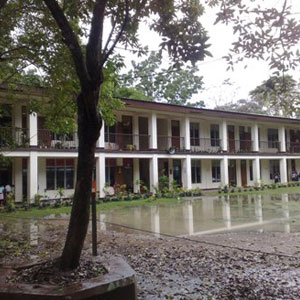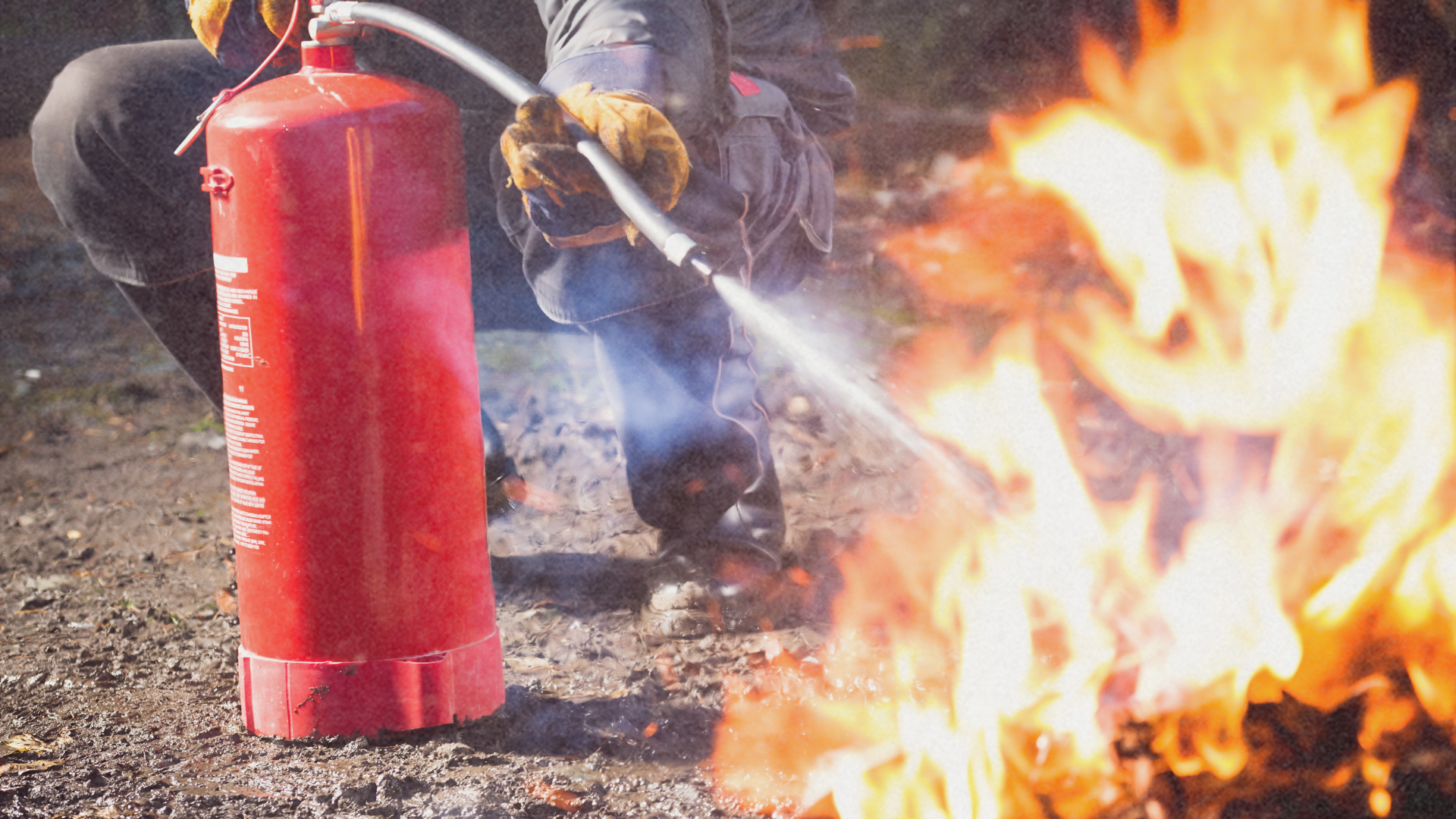The security guard swung his flashlight across the darkened room. The beam of light scanned rows and rows of desks and chairs, table tops, laboratory equipment, and students’ experiments left overnight to process. Nothing flammable here.
The guard turns his attention to several comfort rooms closed down for the night. He noted that all lights were turned off and no faucet was left running. He goes out of the building and walks through the grounds, shining his flashlight at some dimly lit corners. Nothing suspicious there.
He walks back to the outpost, where he will note his observations and recommendations. In the next hour, he will once again go on rounds, making sure all is safe and secure.
All clear. Peace and quiet. But all this tranquility will be broken in just a few hours, as hundreds of students descend upon the school grounds. The security guard’s life will take on a different dynamic as the campus teems with life. And with this increased activity comes a greater risk to campus security.
Leoncio Miralao, Physical Plant Administrator of Ateneo de Manila University in Loyola Heights, Quezon City, sums up the role of campus security as “the protection of life or safety of the students, faculty, staff and members of the community.” This protection is against verbal abuse or physical harm from intruders or outsiders, from fellow students (i.e., stopping fights among students) and from vehicles in traffic (i.e., vehicles against student pedestrians or vehicles against vehicles).
It is also security’s responsibility to keep them safe from fire, bomb threats and natural calamities such as earthquakes, typhoons and floods. In case of fire, security personnel should guide them in vacating the premises and directing them to a safe area. They also assist firemen in putting out the fire by securing the area concerned.
Aside from protecting lives, campus security also protects the property of students, faculty, staff and other members of the community from thieves. This is done by screening and directing all visitors on campus to the specific offices and persons being visited. Roving and building guards also retrieve unattended items or personal belongings or students, turning these over to school authorities for proper retrieval by their owners. These same roving guards also check on unlocked vehicles that are parked on campus, to deter possible car thieves. Security personnel also apprehend persons seen or reported taking personal belongings of students and members of the community, as well as suspicious persons breaking into buildings and other facilities like offices, gym lockers or basketball courts.
Campus security is also tasked with keeping buildings and facilities inside the building such as offices, laboratories and gyms from being broken into. Guards turn on building security lights (perimeter) to deter access by intruders. They also turn off lights which have been left on in classrooms and offices as applicable. Securing the building also involves looking out for fire or flooding caused by open faucets in laboratories and toilets that could damage equipment in adjacent rooms or those below, as well as flooding due to typhoon and strong rain which can result to roof leaks and damage to property.
Lorena Marcelino of Pateros Catholic School adds: “We make sure that the facilities and activities are always safe for our students. Campus security is the concern of all our personnel. We make sure that our students are well-protected. The gate is secured, facilities well-maintained and drills are conducted.”
For Eduardo Masangkay, Chief Security Officer of Centro Escolar University, campus security’s responsibility is “to maintain a safe, peaceful atmosphere in the campus conducive to teaching and learning in the university.” And part of student safety is preparedness for calamities and disasters. Masangkay continues: “We also continuously update the contingency plans as far as calamity and disaster preparedness is concerned. These are evaluated in coordination with CHED, Bureau of Fire Protection, PHIVOLCS, NDCC and Office of Civil Defense. When we conduct earthquake drills, we have to coordinate with these agencies to see to it that our drills pass their standards. They send observers to monitor that we comply with criteria and checklists. We also take seminars from the Red Cross, Bureau of Fire Protection, and OCD, and we disseminate the learnings to the campus community. We conduct drills at least twice a year. Of course you cannot predict disasters, so it would be good to be always prepared.”
With all this concern for campus security, parents and guardians are assured that their children will be safe while inside the schools. But how far does this security extend? What if the threat goes beyond the ivy walls?
Over at the Ateneo campus, Miralao explains: “Generally security’s area of responsibility is limited to the area or property of the institution. But in the case of Ateneo, guards are required to cover the area immediately outside the property of the school. There are guards, for instance, assigned to cover the footbridge across Katipunan Avenue, which is outside of Ateneo where hold-ups and robbery occur. Based on the principle of “hot pursuit”, guards employed by Ateneo are required to pursue intruders, thieves, robbers suspected of committing crimes on campus or reported having committed crimes on campus. There are cases when security assisted students seen robbed off-campus. Security is mandated to apprehend suspects outside the campus when assistance is requested or when crime is seen being committed off-campus. Technically, guards are authorized to carry sidearms or firearms only in their area of work or assignment. However, they can act on ongoing or actual crimes being committed. Ateneo has taken the position of acting on incidents even if it occurs outside the campus but within the vicinity involving Ateneo students and personnel. Students are protected from threats to the extent doable for Ateneo. In effect, Ateneo cooperates and work closely with the family of the student in protecting students. This is true for students under threat of kidnapping where special arrangements, i.e., parking slots and bodyguards are authorized.”
But ultimately, Masangkay believes that campus security is the responsibility not only of security agencies or security officers. He concludes: “Security is everybody’s concern. As long as you are security-conscious, you will remain safe, or at least keep yourself far from harm.” •
The security complement of CEU also extends assistance even outside the campus. Masangkay reiterates that although security is required only within the school, “we still assist students who are victims of crime even outside the campus.” They accomplish this through proper coordination with the PNP and barangay officials.
SIDEBAR
CHOOSING THE GUARD
Securing a school is an entirely different ballgame from providing security for banks, hotels, factories, or other institutions. Dino Bobier, Training Center Director for the Safeguard security group, observes the distinction: “Integrated Safeguard Security Agency, Inc. has been providing campus security for the St. Mary’s Academy since 1962. And since that time, the relationship between our guards and the students has been something like family. We are glad to note that the elementary and high school students call our guards “kuya” instead of the more formal “Sir” like guests do in hotels or clients in banks. And that makes our security guards very happy, when we see that students are not afraid of them but instead consider them trusted members of the family.”
Bobier shares that this “family” perspective and attitude was one of the criteria posed by the nuns of St. Mary’s. They preferred guards who were married and had children, so that they can better understand the needs of the students.
“Sometimes, the kids are really makulit (annoyingly repetitive, mischievous and unruly).” Bobier remarks. “ As our guards are also parents, they can relate to the students. And the students are not threatened by them. So the relationship is not based on fear, but respect for authority.”
Aside of course from this relationship, the guards of Safeguard have had the benefit of continuous updated training. Their track record of 47 years keeps their clients safe and secure.
Ateneo, CEU, Pateros Catholic School and most learning institutions also take track record as one of the primary criteria when choosing an agency to provide security for their campuses. CEU’s Masangkay comments: “There are quite a number of security agencies out there, but we do not only look at their proposals. We look at their track record. Eagle Star Security Services has been servicing CEU for the past 12 years, so we know them very well. We also want them to be updated and continuously educated about safety concerns. As part of our staff development, we conduct bi-annual seminars for our guards on various topics, aside from that of outside organizations.”
The Campus Security Management of the Philippines (CSMP) and Management Association of Security and School Officials (MASSO) provide accreditations and recommendations for security agencies. As these are organizations of all security officers around the Philippines, they know each other and give referrals to one another.
Masangkay is currently MASSO president, as well as chairman of its Mendiola consortium, composed of schools in the area like San Beda College, La Consolacion, College of the Holy Spirit, CEU, V. Mapa, and St. Jude Catholic School. He is also a member of the board of the Campus Security Management Association of the Philippines.
Masangkay further explains: “We do background checks on security agencies who offer their services. We also check on their roster of clients and even contact these clients for veracity.”
Other organizations involved in regulating security agencies are the Philippine Association of Detective and Protective Agency Operators or PADPAO — which is composed of all private security agencies. There is also the Security Agency and Guard Supervision Division or SAGSD — which is a unit of the PNP’s Civil Security Group that’s tasked with issuing licenses to operate to security agencies, firearms licenses and permits. They also regularly conduct inspections of security agencies.
As part of Philippine Association of Detective and Protective Agency Operators (PADPAO) and Security Agency and Guard Supervision Division (SAGSD), Masangkay and other security officers attend seminars to see to it that upon hiring a certain agency, they already know what is required.
On the other hand, proof of career advancement in the industry is CEU’s Loreto Galamgam, who used to be a guard with Eagle Star. Because of exemplary performance, Masangkay has promoted him and absorbed him as an organic personnel of the university. Galamgam says of his experience: “To improve the services of a security agency, there should be continuous training on safety. We do get that from regular seminars from the school and other security organizations. Also, customer service is very important, because when you get right down to it, security guards are actually the school’s frontliners.” •






